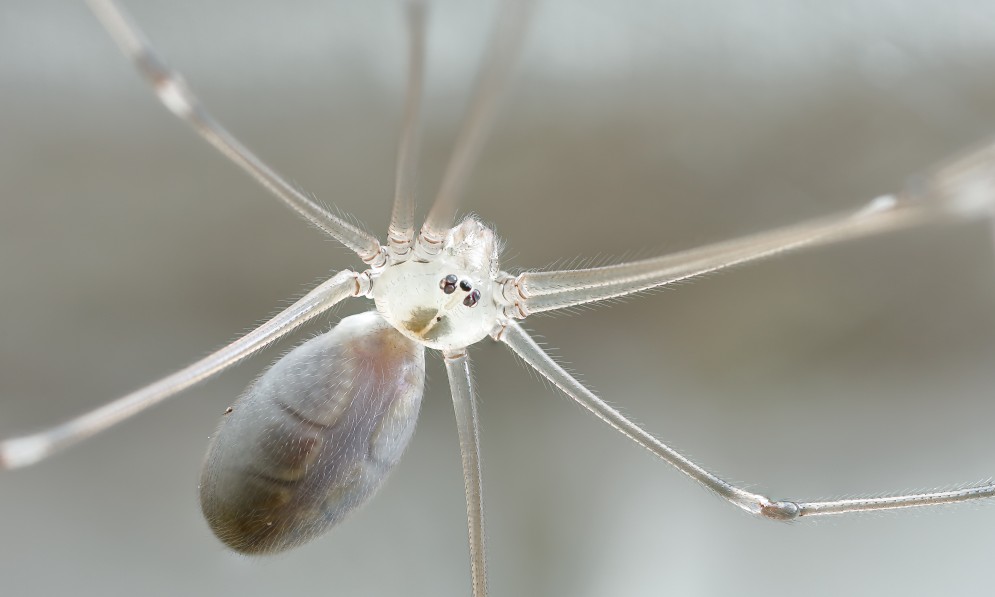Spiders play a huge part in keeping our natural world in balance, and their webs can be works of art. By Anne Graeme
Forest & Bird magazine
A version of this story was first published in the Spring 2023 issue of Forest & Bird magazine.
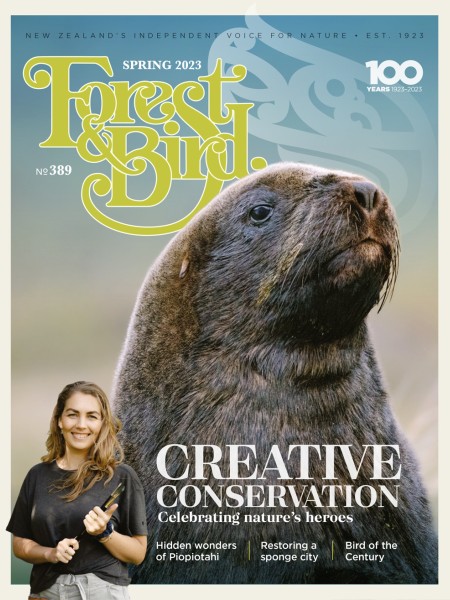
I like spiders. They are weird and beautiful in themselves, and they play a vital role in the big picture of the natural world. Spiders eat enormous numbers of insects, many of which are pests.
But we treat them harshly. We destroy their habitats, assault them with pollutants, and poison them with insecticides.
I let spiders be – and the daddy long-legs spiders repay me by leaving poop on the paintwork, dusty webs on the ceiling, and their dinner leftovers on the windowsills.
Above the computer, there is the big daddy long-legs, resting upside down in her messy web in the corner. She is carrying an egg sac in her mouth. Oh dear, I don’t want all those little spiderlings in the house, but there is no point in taking her outside. She is a house spider.
As the fly swat approaches, she senses the threat. She’s frightened. She begins to whirl frantically around and around, hoping to distract me. Then she drops to the ground and runs away on her spindly legs. I’ll never catch her.
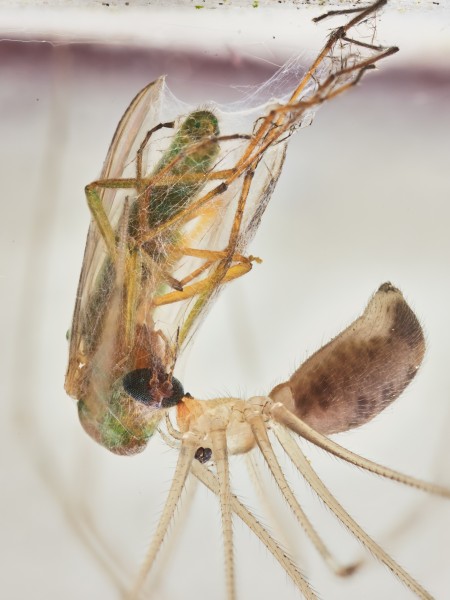
Daddy long-legs catches its prey in a messy tangleweb. Image Bryce McQuillan
If I had been a fly, sticking and struggling in the web, the spider would have come closer, fending me off with her long front legs while flinging lengths of silk over me, so I became helpless.
Then, when I was immobilised, she would have injected me with digestive juices. Wrapped in a silken mummy, inside the cauldron of my exoskeleton, I’d be dissolved into soup for the spider to suck up or save for later. Gruesome perhaps, but this is how spiders, which cannot chew, eat their food.
All spiders are predators and can deliver venom from their fangs. The daddy long-legs doesn’t need to use it on flies, thanks to its food parcel strategy, but if it did bite me (and it would prefer to run away) I would scarcely notice.
A dose of venom that would be lethal to an insect is only a local irritant to a large animal like me.
Only two species in Aotearoa – the endangered native katipo and the introduced redback – are seriously dangerous to people, and your chance of meeting them is remote.

Ladder web spider. Image Bryce McQuillan
Spiders have a special gift. They can spin silk and use it to make a shelter, to wrap their eggs, to travel from place to place, or as a safety line if they fall. But to us, spider silk is most visible in the webs they build to catch their prey.
Every spider has a web-building plan, refined by natural selection and hard-wired into its genes. The daddy long-legs and grey house spider build cobwebs, messy three-dimensional structures that often take advantage of the corners of ceilings.
In terms of architecture, engineering, and sheer beauty, orbwebs are the clear winners. Strong and stretchy, orbwebs can catch a fast-flying insect without being ripped apart or letting the prey escape.
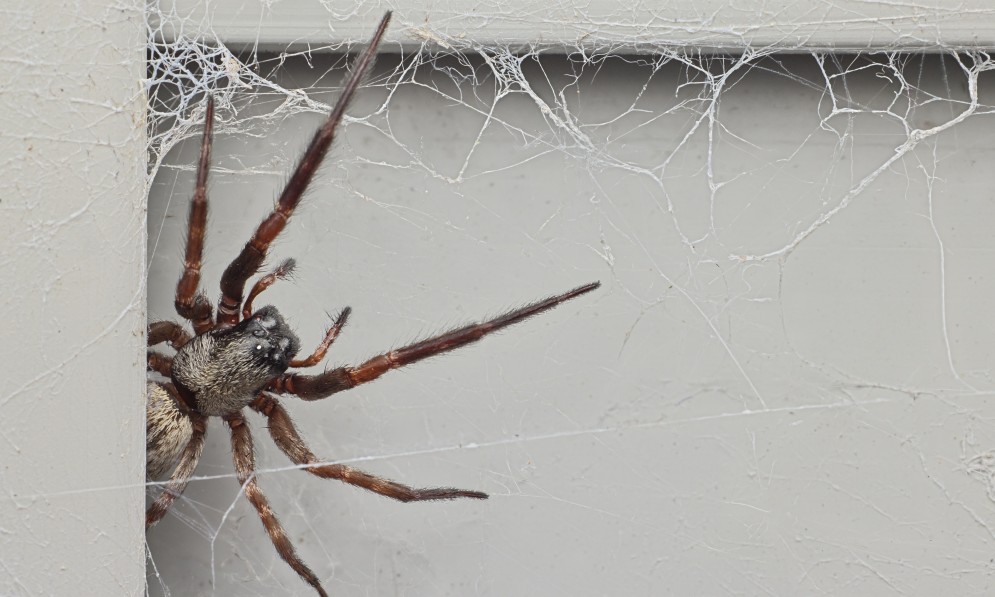
Female Badumna sp Grey house spider. Image Bryce McQuillan
The orb web spider builds the spokes first, then weaves the spirals, spacing them apart by using the distance between the tips of its back legs and the spinnerets on its abdomen as a ruler.
Recent research suggests other spider webs evolved from the ancient orbweb’s design, including the ladderweb, where the spider builds the legs first then fills the gaps with wonky steps.
Many of us have seen giant sheetwebs in the bush. Sheet web spiders build a trampoline strung between tree trunks, a net into which flying insects tumble when they bump into the guy ropes above it.
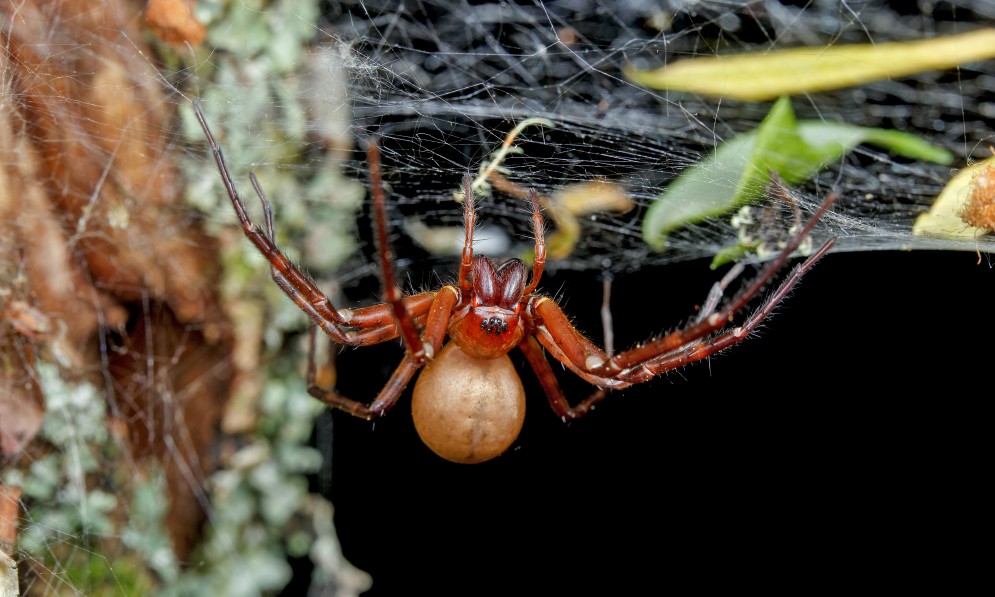
Cambridgea foliata sheet-web spider. Image Bryce McQuillan
Spider silk is built to last. It contains protein, and takes a lot of metabolic energy to produce, so some spiders recycle it by eating their damaged webs.
I wish they would eat the webs around my house, but perhaps the abandoned dusty webs are not their fault. A spider’s life is full of hazards, and they may have become prey themselves.
Maybe house spiders stretch our tolerance too far, but we can admire native spiders outside in the garden or the wild. They play a major role in our natural world.

Female Colaranea verutum endemic green orb web spider. Image Bryce McQuillan

